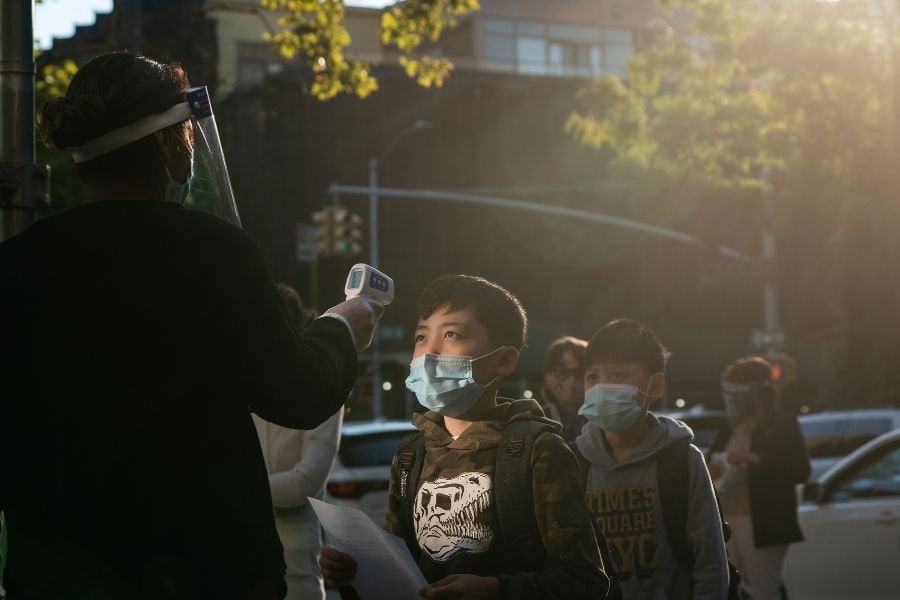
New York becomes the first big city to reopen all its schools
Roughly 480,000 children have opted to start the school year remote-only, an indication of how wary many New Yorkers are of sending their children back to classrooms in a city that fears a second wave of the coronavirus
 Students had their temperatures checked as they arrived for sixth grade in Queens on Thursday, Oct. 1, 2020. New York City completed the reopening of all its public schools Thursday morning, a major step in its recovery from having been the global epicenter of the pandemic and a hopeful sign for the country’s unsteady effort to return children to classrooms. (Todd Heisler/The New York Times)
Students had their temperatures checked as they arrived for sixth grade in Queens on Thursday, Oct. 1, 2020. New York City completed the reopening of all its public schools Thursday morning, a major step in its recovery from having been the global epicenter of the pandemic and a hopeful sign for the country’s unsteady effort to return children to classrooms. (Todd Heisler/The New York Times)
NEW YORK — New York City completed the reopening of all its public schools Thursday morning, a major step in its recovery from having been the global epicenter of the pandemic and a hopeful sign for the country’s unsteady effort to return children to classrooms.
Not long after sunrise, middle and high school principals welcomed students back into their buildings for the first time since March, following elementary school children who had started earlier this week. About half a million students, from 3-year-olds in prekindergarten programs to high school seniors, will have returned to school by next week.
Thursday was the first day of in-person learning for Kelisha Prines, 14, at Bedford Academy High School in Brooklyn. “She wanted to get back to the old feeling of school, sitting in the classroom,” her mother, Myisha Sawyer, 32, said. “She missed her friends, just being around kids.”
Roughly 480,000 children have opted to start the school year remote-only, an indication of how wary many New Yorkers are of sending their children back to classrooms in a city that fears a second wave of the coronavirus.
“We did something that other cities around the country could only dream of,” Mayor Bill de Blasio said Thursday morning. “This is a key moment in our rebirth, and a lot of people said it couldn’t be done.”
©2019 New York Times News Service




